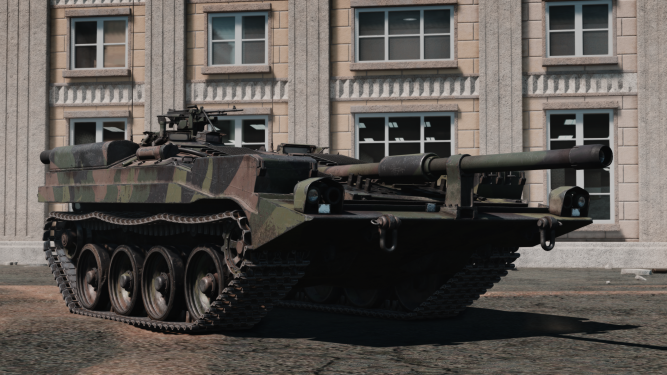Strv 103 (Family)
Contents
Strv 103A on location Sweden.
History
The stridsvagn 103 (strv 103), also known as the "S-Tank", is a Swedish post-World War II main battle tank, designed and manufactured in Sweden by Bofors AB (and to some extent Landsverk AB). It was developed in the late 1950s to the mid 1960s and was the first main battle tank to use a turbine engine, as well as the first, and so far only, service tank to not feature a turret. While some might argue that the S-Tank is not a tank, or that turretless casemate vehicles can be called tanks, it is a fact that the S-Tank was designed as, deployed as, and used as a tank by the Swedish army. Besides lacking a turret it was however the first tank with a fixed main gun, meaning that the gun was fixed in the hull on both the X-axis and Y-axis. To aim the gun horizontally the entire vehicle had to be steered side to side (same as the hull gun on the B1 bis). To aim vertically the tank used a new type of controllable suspension, probably also a first in the world, that allowed the tank to tilt forwards and backwards using gas-hydraulic hydropneumatics.
Besides tanks, the chassis was also used for other AFV projects, such as the Bkan 1C Self-Propelled Artillery Gun (SPAG) and VEAK 40 Self-Propelled Anti-Air Gun (SPAAG).
S-Tank name
The name S-Tank is one of, if not the most common name for the strv 103 internationally. Contrary to popular belief, however, the S-prefix does not actually refer to Sweden, nor is the name English in origin, but actually a translation of the Swedish project name stridsvagn S.
During early development (ca 1958–1962) of what eventually would become the strv 103, the Swedish army projected three competing tank designs based on different principles:
- Strv A (the A-tank) – Angloamerikansk utveckling (Anglo-American development): a heavily armoured, turreted MBT such as the M48 Patton and Centurion
- Strv T (the T-tank) – Tysk/fransk utveckling (German-French development): a mobile, lightly armoured, turreted MBT such as the Leopard 1 and AMX-30
- Strv S (the S-tank) – Speciell utveckling (Special development): a heavily armoured, turretless MBT as suggested by engineer Sven Berge in 1956
The project name stuck post-development and was used in advertising of the strv 103, essentially becoming the product's name (although its actual product name was Bofors VK 105 S 64).
Vehicles
Mainline vehicles (S-Tanks)
| Strv 103-0 | |
|---|---|
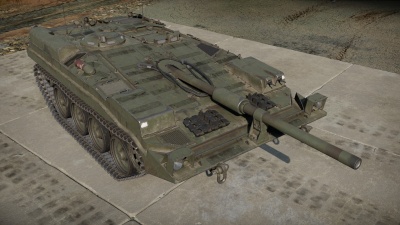
|
Strv 103-0 (Bofors VK 105 S 60) is the pre-production series of the S-Tank (series 0), delivered to the Swedish Army in 1963. The 0-series consisted of 10 vehicles ordered in 1960 after successful trials with the two initial strv 103 prototypes S1 and S2 (Bofors VK 105 X 59). The series was primarily used for field and equipment trials prior to the delivery of the main production series (sub-series A) to the Swedish Army. They are known for their varying equipment, such as lack of rib-armour and domed commander's cupola initially planned to mount an external 20 mm automatic cannon. The same cupola was fitted to the Pbv 301 IFV, albeit with the 20 mm gun. |
| Strv 103A | |
|---|---|
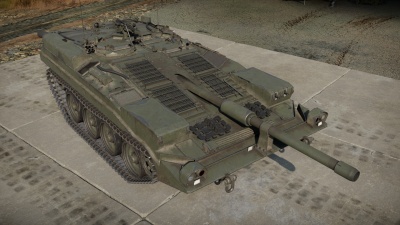
|
Strv 103A (Bofors VK 105 S 64) is part of the main production series of the S-tank (sub-series A), delivered to the Swedish Army from 1967. Sub-series A consisted of 70 vehicles ordered in 1964 after successful trials with 10 pre-series strv 103-0. Strv 103A was initially used to train instructors and it was not until 1968 that conscription courses began. Strv 103A was short-lived. Its 300 hp gas turbine had proven to be underpowered even before delivery, resulting in the next series (sub-series B) being uprated with a stronger engine. Sub-series B (strv 103B) was delivered between 1970 and 1971, during which the 70 sub-series A vehicles was updated to strv 103B standard in parallel. |
| Strv 103C | |
|---|---|
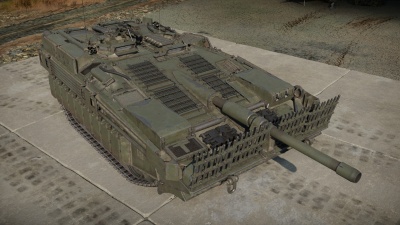
|
Strv 103C (Bofors VK 105 S 64) was the last variant of the strv 103 tank to see service, delivered to the Swedish Army from 1986 to 1988. Strv 103C was a modernization upgrade (REMO = Renovation & Modification) for the existing strv 103 tank-fleet in Swedish service, initialized between 1978 to 1982. The upgrade included a stronger piston engine, improved transmission, flare launchers, jerrycans filled with diesel as skirt armour, new tracks and integrated laser rangefinder and dozer blade for all vehicles (previously only certain vehicles had laser rangefinder and dozer blade). |
Offshoot vehicles (S-Tank based)
| VEAK 40 | |
|---|---|
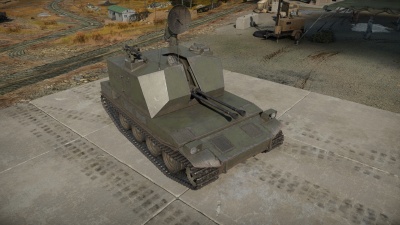
|
VEAK 40 (Bofors VEAK 40 X 62) is a Self-Propelled Anti-Air Gun (SPAAG) prototype based on the S-Tank chassis developed by Bofors from 1962 to 1968 as part of a longer Swedish Army project to find a replacement for the Lvkv fm/43 SPAAG from WWII. One prototype was delivered in 1965 and proved during testing to be ahead of its time. However the Swedish military decided to focus resources on the Swedish Air Force, rather than the air defence, resulting in the VEAK 40 project becoming too expensive to finish. |
| Bkan 1C | |
|---|---|
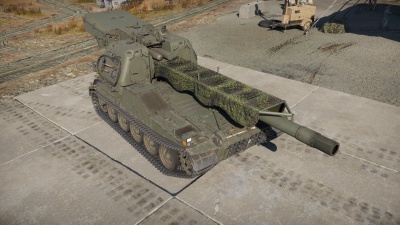
|
Bkan 1C (Bofors VK 155 S 62) is a Self-Propelled Artillery Gun (SPAG) based on the S-Tank chassis, initially developed by Bofors from 1960 to 1965 as part of a longer Swedish Army project to develop a modern autoloading 155 mm-equipped SPAG. The initial bkan 1 version was delivered to the Swedish Army from 1965 to 1969 and used the strv 103A's underpowered powerpack, subsequently receiving the suffix A. In 1988, it was decided to upgrade the powerpack of the existing bkan 1A vehicles to the stronger strv 103C powerpack, redesignating them bkan 1C. However, only the piston engine was upgraded to C-standard in the end. |
Media
- Videos


